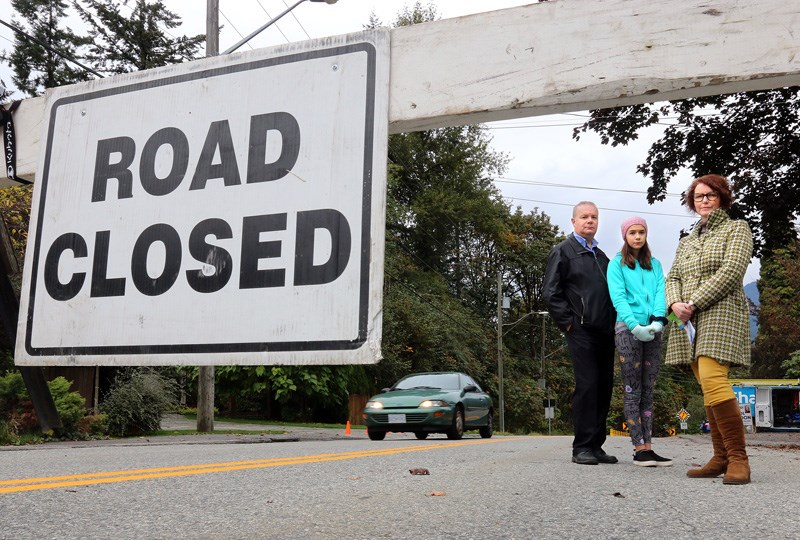Residents of Gatensbury Street in Port Moody are relieved road improvements will alleviate some of their safety concerns.
But now, they’re worried about the carnage that could occur before the work is completed.
Darryl Skipworth and Lori Holdenried say drivers have been routinely ignoring the road closure signs that were erected Monday at the top and bottom of the steep, twisting route that is heavily used by commuters traveling between Coquitlam and Port Moody.
That has them fearing for own safety as well as that of construction workers who are in the early stages of a seven-month project to update sewers and water mains beneath the road surface, even out some of the blind curves and gradients that are as steep as 13%, and install raised medians and a new three-metre-wide multi-use pathway for pedestrians and cyclists, as well as improved street lighting and reflective lane markings.
Gatensbury was identified as far back as 2007 as a priority for safety improvements and traffic calming. A 2015 traffic survey estimated 5,500 vehicles use the route every weekday, and a plan to carry out the improvements and calming measures was a component of Port Moody’s master transportation plan that was adopted in 2017.
Holdenried said she has experienced first-hand some of the dangerous aspects of navigating Gatensbury when a car flipped into her front yard in 2009. Skipworth said members of his family have had several close calls trying to walk along the road’s shoulders because there are no sidewalks.
While electronic reader boards were erected along Como Lake Avenue in Coquitlam and St. Johns Street in Port Moody alerting commuters of Gatensbury’s closure, letters mailed to residents in the area reminding them of the closure and Port Moody has posted notices on its website and social media accounts, Skipworth said the volume of traffic hasn’t slowed much.
“During rush hour, there’s lots of cars going down,” he said, adding local residents have been issued card hangers confirming their access to the road.
Jeff Moi, Port Moody's general manager of engineering and operations, said the city is aware of the issue of motorists ignoring the closure signs and it's working with the contractor to ensure the traffic management plan for the project is being executed properly.
Holdenried said while flaggers are supposed to be stationed at the top and bottom of the hill during construction hours, they’re not there once crews quit for the day or overnight, when motorists running the barriers may not see construction equipment on the dark roadway or notice pedestrians or other vehicles trying to navigate blind corners in the single lane being left open where work is occurring.
“I’m just worried about late at night when you may have to be driving on the opposite side of the road,” she said. “If people continue to cut through, there’s more chance of vehicle conflict.”
Skipworth said he’s excited for the safety improvements being constructed — “For me, it’s peace of mind" — he just hopes that safety doesn’t come at the expense of a tragedy in the next seven months.



